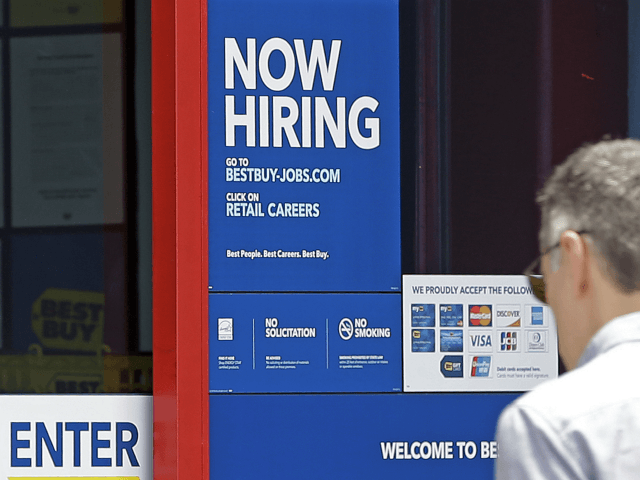Private payrolls growth increased at a faster rate than expected in June, ADP data showed Wednesday, suggesting that the decisions in Republican-led states to end super-sized unemployment benefits are spurring Americans to accept the millions of jobs businesses have opened in recent months.
The gain of 692,000 was well above the 550,000 Econoday estimate. But it fell short of May’s 886,000, which itself was revised down from the preliminary estimate of 978,000. Despite the revision, May was the best month in ADP data since September of last year.
Hiring surged in the leisure and hospitality sector, ADP data show. Businesses added 332,000 jobs in the sector, making it the strongest of the ADP report’s 10-sectors.
The goods-producing sector added 62,000 jobs. Two thousand of those were in mining, 19,000 in manufacturing, and 47,000 in construction. Manufacturing and construction were early leaders in the labor market recovery, reflecting a boom in the housing market and high demand for goods while much of the services sector remained closed or operating at limited capacity.
The service providing side of the economy, which is much larger than the goods-producing side, added 664,000 jobs. After hospitality and leisure, health and education added the most jobs at 123,000. Trade, transportation, and utilities added 62,000 and professional and business services added 53,000.
Jobs were added pretty evenly across business sizes. Small businesses with less than 50 employees added 215,000 jobs. Medium businesses, those with less than 500 workers, added 236,000. Larger businesses added 240,000.
ADP’s report has had trouble aligning with the Department of Labor’s official jobs numbers throughout the pandemic, indicating that the rapid closures and reopenings of businesses and sectors of the economy has made it harder to produce accurate data. The Labor Department’s jobs figures for June will be released Friday. Economists expect payrolls to grow by 675,000, including 555,000 in the private sector. If the ADP estimate is correct, the official numbers should beat estimates.
Twenty-one states have ended the extra $300 per week payments that the federal government was adding to state unemployment benefits, which average around $320 a week. With those payments, out-of-work Americans received the equivalent of around $18 per hour, making the benefit level so high that nearly half of the unemployed were receiving more in benefits than they did in compensation when they were working. That effectively priced millions of Americans out of the job market.
In May and June, Republican governors announced they would stop the extra payments prior to their expiration date in September. That appears to be prompting out-of-work Americans to accept jobs.

COMMENTS
Please let us know if you're having issues with commenting.